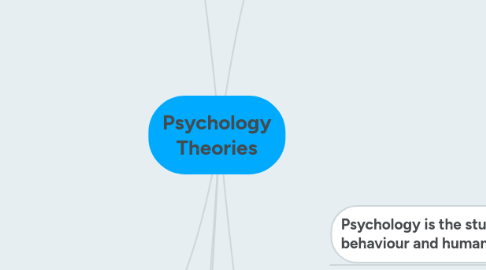
1. Archetype
1.1. Jung
1.1.1. Saw the mind as having three parts: ego = conscious, unconscious-personal = memories/ experiences and collective-unconscious = where archetypes exist.
1.1.2. Described archetypes as an unconscious set of images common to all humanity.
1.1.2.1. Models of people, personal and behaviour that are innate, universal and hereditary.
1.1.2.2. Specific to each person dependent on their individual experience, life events and culture - something like an instinct.
1.1.2.3. Analogy: like foundation on which we build conscious self-dependent on personal life.
1.1.3. Suggested that archetypal structure governs both organic and inorganic behaviour and that three is a psychic entity and a bridge to all matter.
1.1.4. Archetypal figures, although limitless in number, can be categorized by four dominant traits.
1.1.4.1. 1. Shadow: sex and life instincts Aspect of self not identified or acknowledged Weaknesses, repressed thoughts, desires, shortfalls.
1.1.4.2. 2./ 3. Anima/ Animus: Anima - feminine image in male psyche, expectations of women, feminine image/ possibility Animus - male image in female psyche, masculine image
1.1.4.3. 4. Persona: how we present ourself to the world/ shields ego from negative images
1.1.4.4. Other examples: Hero - bravery, champion Wise old man - wisdom, experienced
1.1.5. Actualization of an archetype is individual and occurs dependent on a persons environment (i.e. maternal archetype for a baby is present in the mother)
1.2. Archetypal Events: as parts of the collective unconscious, organize and direct human thoughts and behaviour and control one's life style. Each stage in life is directed by archetypal requirement and is fulfilled by actions.
2. Hierarchy of Needs
2.1. Maslow
2.1.1. Maslow's 'Hierarchy of Needs' represents what motivates people, independent from reward or unconscious desires. Once the 'lowest' needs (physiological) are satisfied, one can grow to reach higher levels. Maslow suggested that all humans are capable of promoting themselves within the 'Hierarchy of Needs', progressing towards self actualization. However, the process may be slowed or fluctuate between levels due to different life events (i.e. divorce, job loss).
2.1.2. Self Fulfillment Needs
2.1.2.1. Self-Actualization Needs: achieving one's full potential, including creative endeavours
2.1.3. Psychological Needs
2.1.3.1. Esteem Needs: feeling of accomplishment
2.1.3.2. Belongingness/ Love Needs: intimate relationships, friends
2.1.4. Basic Needs
2.1.4.1. Safety Needs: security, safety, well being
2.1.4.2. Physiological Needs: food, water, warmth rest
3. Bibliography
3.1. http://changingminds.org/explanations/identity/jung_archetypes.htm
3.2. https://en.wikipedia.org/wiki/Jungian_archetypes
3.3. http://www.simplypsychology.org/maslow.html
3.4. https://en.wikipedia.org/wiki/Jungian_archetypes
3.5. www.muskingum.edu/~psych/psycweb/history/jung.htm
3.6. https://www.khanacademy.org/science/health-and-medicine
3.7. www.muskingum.edu/~psych/psycweb/history/jung.htm
4. By: Jessie Fleming
5. Operant Conditioning
5.1. Thorndike
5.1.1. Classic Conditioning: based on developing associations between events vs. Operant Conditioning: based on learning through consequences of behaviour.
5.1.2. Law of Effect: in a given situation, the responses that result in a positive or satisfying effect are more likely to be repeated than those that result in a negative or discomforting effect.
5.1.2.1. "Any behaviour that is followed by pleasant consequences is likely to be repeated and any behaviour followed by unpleasant consequences is likely to be stopped."
5.1.2.2. His research was done by placing a hungry cat in a puzzle box. Thorndike observed how long it took for the cat to escape by pressing a lever that opened the door, allowing the cat to get out for a piece of fish. The cats became increasingly fast at pressing the lever with each successive attempt.
5.2. Hopes to identify processes that make operant behaviours more or less likely to happen.
5.3. Skinner
5.3.1. Behaviouralist/ felt that classical conditioning was too simple to explain all of human behaviour.
5.3.2. A behaviour that is reinforced tends to be repeated/ strengthened and vice versa.
5.3.2.1. Positive reinforcement (strengthens): given positive reward for given behaviour, it was more likely to be repeated/ strengthens behaviour
5.3.2.2. Negative reinforcement (strengthens): removing a negative reinforcement (adverse/ uncomfortable stimulus) acts like a reward because it ends the uncomfortable experience
5.3.2.3. Punishment (weakens): causes problems; the behaviour punished for is not forgotten but surpassed/ can re-amerge or causes increased aggression and/ or fear.
5.4. Pavlov
5.4.1. Conditional stimulus
5.4.1.1. Feeding dogs causes salivation. When done repeatedly (i.e. each time he entered the room), the dogs would be fed. Eventually, when he entered the room, the dogs would salivate before being fed.
5.4.1.2. Created term "operant conditioning" = observing actions, their cause and consequences, to explain human behaviour.
6. Psychology is the study of human behaviour and human interaction.
7. Schema
7.1. Piaget
7.1.1. Mental concept or framework developed from a life experience - a basic building block.
7.1.2. Used to organize present information into a 'framework' available for comparison with future experiences.
7.1.2.1. A form of 'short-cut' used to rapidly identify new information and deal with it.
7.1.3. Schema's can influence attention/ absorption of information.
7.1.3.1. Humans are more likely to note information which fits into existing schemas. May ignore information so as not to have to 'find' the existing schema or create new.
7.1.3.2. Prejudice = when a schema prevents a person from seeing the present reality and reduces one's ability to take in new information.
7.1.4. When presented with new information (i.e. object, action or thought), it can either be placed in an existing schema = assimilation. If the information is different enough compared with prior schema's, this creates a sense of disequilibrium which acts like a driving force to create a new schema = accommodation.
7.1.5. Types of schema
7.1.5.1. 1. Self-schema: input is dictated by the present but also based on the past - including one's self-conception (i.e. selectively hearing/ noting things dependent if congruent with own positive or negative self image). Information about self can be self perpetuating (i.e. if told is 'Tomboy', will continue to act that way)
7.1.5.2. 2. Person-schema: traits and judgements for others (i.e. if always shy will continue to expect shyness)
7.1.5.3. 3. Role-schema: concepts based on others jobs or social position (i.e. same person, at work vs. play, expect very different behaviour)
7.1.5.4. 4. Event schema = script
7.1.5.5. 5. Innate-schema: babies born with rooting, sucking and grasping reflexes.
